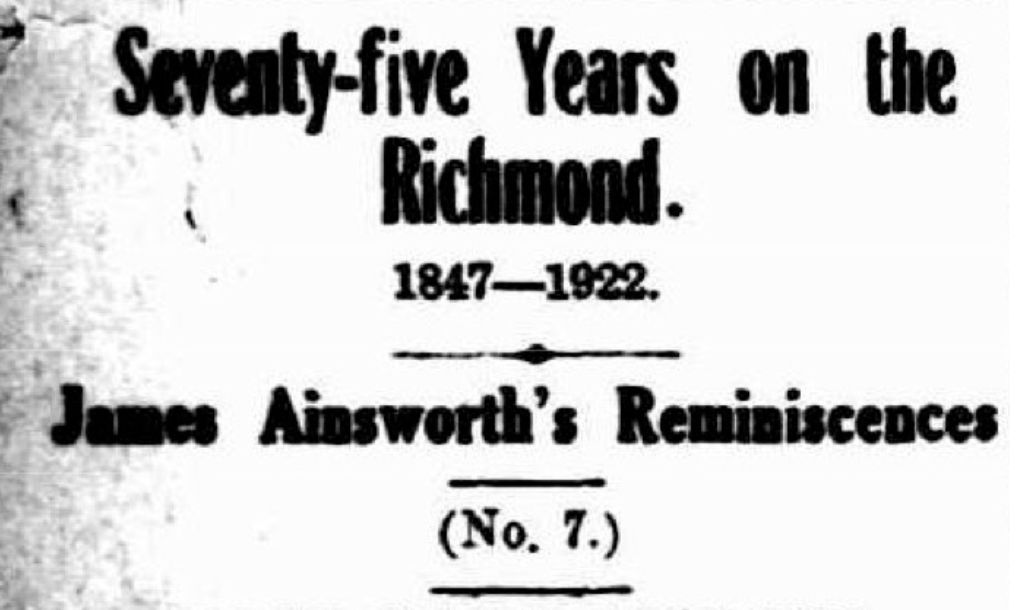Early historical accounts of settlement in the Northern Rivers make for a fascinating read and give us insight into what the Big Scrub was originally like.
That the landscape was irrevocably changed is well documented, but what’s less well known is the role of flooding in timber transport and the changes made to the waterways of the Richmond catchment. Even more startling in the wake of this year’s dual flooding event is an account of no less than eight inundations experienced in 1864.
Published in the Casino and Kyogle Courier / North Coast Advertiser, the story tells of what life on the Richmond was like between 1847-1922. Written by sugar cane farmer, timber getter and carpenter, James Ainsworth, the account reveals details of the timber trade and weather events over a 75 year period.
According to Ainsworth the headwaters of Wilson’s and Emigrant Creeks played a conspicuous part in early cedar campaigns and consequently the settlement of towns. After the first cedar had been removed from the creek banks, exploration opened up into the arms above Lismore. New settlers moved north and along with the original pioneers erected the first “humpies” at the junction of creeks where Lismore now lies. “In the decades that followed, millions of feet of cedar, pine, teak and other timber found their way down these tributaries to the main river,” Ainsworth wrote.
In the dry, the creeks were low and the timber was hauled to the waterways. It was branded and left to await the floods to sweep it downstream to where a heavy iron chain stretched across the river to block it for sorting and loading on to vessels. Originally the logs were cut small to fit in smaller vessels, but later the creeks and tributaries were opened up and cleared of snags to allow access for larger vessels, as described below. By the early 1900s, the river system and mouth had already been significantly altered, both by human intervention and monster floods.
Ainsworth, who lost his father to floodwaters, goes on to detail the history of flooding during this time. The account mirrors the records of flooding from more recent decades, but shockingly eclipses the record-breaking floods that decimated the Northern Rivers this year with a description of “no less than eight inundations” in rapid succession during 1864.
The first major flood described is dated “1858 or 1860”. During this flood it was “possible to row a boat from Woodburn to Coraki in a direct line across country and in the same way to the Evans River”. Ainsworth’s account claims that in the next major flooding event in 1864 there were no less than eight inundations following each other in the one year.

With booming development in Sydney, Melbourne and Brisbane fuelling the demand for timber, red cedar was highly sought after. The trees that were felled were mammoth in size. The largest is said to have yielded 33,000 feet of timber while another notable beast had a trunk width of at least 8 feet (2.5m).

Ainsworth’s account doesn’t attempt to provide a full history of flooding during the period covered. Many more floods were recorded in official records for the period, sometimes coming in clusters. According to a report published on The Conversation, Lismore experienced three major floods between 1887 and 1893, ranging between 10.43 and 12.46 metres. And in 1967, Lismore flooded five times between March and June, with floods ranging from 5.09 to 10.27 metres, according to analysis conducted for the report.
This heavy rainfall is part of the reason why nowhere else in the country, apart from the Atherton Tablelands, was said to possess the quality and quantity of timber of the Big Scrub. This wealth of natural resources saw not only the land irrevocably changed but the rivers and creeks altered significantly, helping create the waterways we see today.
Source: National Library of Australia records, Casino and Kyogle Courier / North Coast Advertiser, Saturday, 11 November, 1922.



